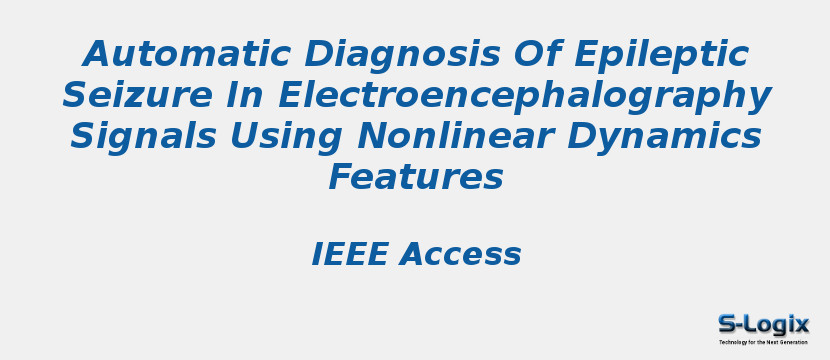Research Area: Machine Learning
Epilepsy is one of the most common neurological disorders generally characterized by sudden and recurrent unprovoked seizures, which is commonly diagnosed through visual inspection of electroencephalography (EEG) signals. However, since EEG signals are highly complex, nonlinear and nonstationary in nature, both visual inspection and the existing computed aid detection approaches fail to capture the intrinsic dynamics of seizure events, leading to unsatisfactory detection performance. Therefore, an accurate computer-aided automatic epileptic seizure diagnosis system is valuable and urgently needed in clinical application. In this study, we propose an automatic classification method using nonlinear dynamics features and nonlinear classifiers for determining whether the EEG signals are in interictal or ictal activities, respectively. The main novelty of this paper is that investigating the performance of discernable entropy-based nonlinear dynamics features used for automatic diagnosis of an epileptic seizure. First, the discrete wavelet transform is applied to obtain de-noised and sub-band signals. Second, the nonlinear dynamics features are extracted based on information entropy theory. Subsequently, one-way analysis of variance and forward sequential feature selection technique are employed to identify the most explainable features for seizure detection. Then the selected features are fed to six different classifiers, namely, least square-support vector machine (LS-SVM), K-nearest neighbors, logistic regression, linear discriminant analysis, Naive Bayes classifier, and random forest, for automatic diagnosis of the epileptic seizure. Finally, a public EEG dataset from Bonn University, Germany, is utilized to investigate the performance of the proposed method. The experimental results show that the LS-SVM yields the optimal performance with an accuracy of 99.50%, a sensitivity of 100.00%, and a specificity of 99.40%. Our proposed method shows great potential for real-time diagnosis of the epileptic seizures, which can be deployed in hospitals to assist clinicians in accurate diagnosis of seizures.
Keywords:
Author(s) Name: Shanen Chen; Xi Zhang; Lili Chen; Zhixian Yang
Journal name: IEEE Access
Conferrence name:
Publisher name: IEEE
DOI: 10.1109/ACCESS.2019.2915610
Volume Information: ( Volume: 7) Page(s): 61046 - 61056
